How drawing from life changed how I see the world
I expected drawing from life to improve my drawing skills. But all of the other, even more transformative things that it has given me have been totally unexpected
There are few things in life that give us access to a free ‘flow’ state. I think you know the feeling I’m talking about: that sensation of your mind emptying, breath slowing, and a deep reconnection with yourself or your surroundings.
Drawing from life is one of those rare things.
For anyone who's a bit dubious of going out to draw from life, bear with me. You might find you want to try it too.
Unblocking the creative flow
I started drawing from life regularly at a time where I felt creatively quite stuck. For more about my journey you can read my post ‘My wiggly way into illustration’, but suffice to say that back in 2016 I was newly graduated and, much to my dismay, not spending much of my time being creative.
I noticed this creative block the most when I tried to draw from my imagination, something I hadn’t done very often for a few years. Where I used to find it easy to let my ideas and imagination flow directly onto the page, I found it had become an awkward and stilted process that also gave unsatisfying end results. I was too conscious of my thoughts, my intentions, and what I was doing.
Some drawings for inktober 2017 were among these drawings, and while it’s not very productive to give ‘good’ or ‘bad’ labels to sketchbook drawings, I remember there being a big gap between what was in my head and what came out on the page.
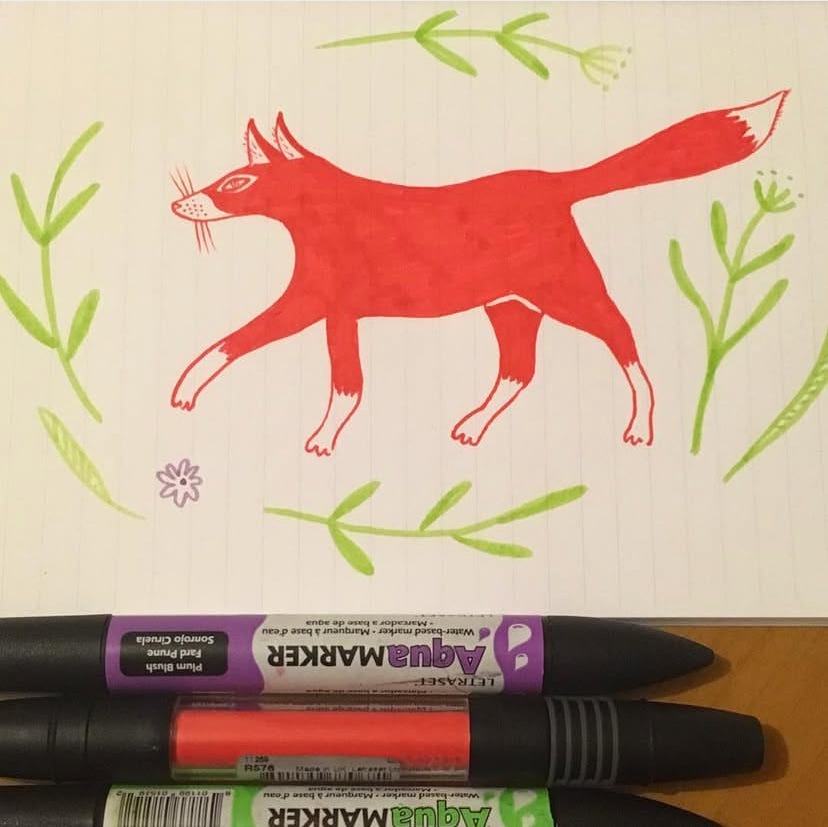
There’s a well-known Ira Glass quote about this taste gap, where he says:
All of us who do creative work, we get into it because we have good taste. But there is this gap. For the first couple years you make stuff, it’s just not that good. It’s trying to be good, it has potential, but it’s not. But your taste, the thing that got you into the game, is still killer. And your taste is why your work disappoints you. A lot of people never get past this phase, they quit. Most people I know who do interesting, creative work went through years of this.
Although this gap didn’t disappear, when I started to draw from life I felt less blocked because I didn’t have to translate an image from my mind onto my sketchbook page anymore. I could simply draw what was in front of me.
The ability of drawing from life to unblock me creatively not only benefited my illustration, but also my writing, theatre making and general thirst to do creative things. For example, in the last show I made, ‘How To Catch A Bear’, drawing became a way to access the work, creating scenes I’d later write and what went on to inform the design.
Creating a sketchbook habit gives you your time back
Once I realised I didn’t always have to provide and worry about the content of my drawings, my sketchbook habit blossomed. At the time I had some very small A6 sketchbooks - small enough to fit in my pocket and costing about £1.50 each - that I used to make my drawings. I loved how quickly I could ‘complete’ a drawing in them. This also helped me get over the scariness of the blank page, as it was filled fast due to lack of available space staring back at me. I filled a few of these with people’s faces that I drew on the tube on my commute to work.
Over time, I started to draw in bigger sketchbooks, moving to A5 and then A4. My subject matter also expanded along with the page sizes, growing from isolated faces of fellow passengers on the tube to whole scenes. Backgrounds, buildings and landscapes were all things I dismissed as boring before this point, but as I drew them I realised that by dismissing them I’d actually shortchanged myself.
This sketchbook habit gave me a new hobby, something to do on journeys or on lunch breaks other than doom scroll. A boring wait at the doctors could become creative if I drew during it. This new habit has felt like a cheat code for boredom sometimes, giving me back time I’d have written off as wasted before.
Putting your drawing goggles on
When you’re drawing from life, you have to really look rather than just see. I mean you have to challenge yourself to draw something as it is, not how your brain thinks it is. This new attention and awareness comes from wearing what I’ll call my ‘drawing goggles’, that were fast becoming an essential part of any outfit. These goggles ask you questions like ‘Hmm…is that dog really that big?’ or point things out to you like ‘Gosh look at that wonderful pattern on that lady’s scarf’. They help you look for things to draw, and challenge you to pay close attention to them so as to record them more truthfully.
When I say truthfully, I mean it in a looser sense than ‘accurately’ by the way. I don’t think truth and accuracy are the same when it comes to drawing. For example, if a certain colour speaks to you or moves you - why not make it more vibrant in your drawing? If you saw someone walk by that had a jacket on you’d like to include - do it!

Perhaps this sounds like I’m contradicting my point about really looking, but I think you can look very carefully while also listening to your intuition. It’s important to remember that you can only wear your drawing goggles, not someone else’s. And yours will always point out things you particularly like. That’s what makes your drawings yours.
Finding intrigue and joy in the everyday
As I broadened the subjects I drew, and observed them more closely, my appreciation for the world around me also expanded. Because I was looking for subject matter in my daily surroundings with my drawing goggles on, I had to pay more attention to them. I began to notice the first signs of changing seasons. The buds of Spring, colours of Summer, first falling leaves of Autumn and first frosts of Winter. I noticed how the architecture changed across different parts of London or other places I’d visit. I’d notice the cats looking out of windows, the laundry on lines, the lost teddies or gloves left on posts.
My sketchbooks started to heavily influence the settings of my stories, and the backgrounds of my illustrations. In this way, the things I draw from life feed directly into the work I make imaginatively. And because of this connection, it follows that the things I see in my day to day life take on more meaning.
Grounding and being present
Of course one of the main benefits of looking with intention is that it grounds you in the present moment. Particularly so in our easily distracted, screen-intensive modern lives. This is why drawing can help us access the flow state. Other thoughts, distractions, experiences, or doubts are temporarily put on hold while we focus on looking and recording what we see on the page.
I like listening to music while I draw out and about, or I’ll revel in background noise to help me tune in to my surroundings. Either way, I find I can clear away the chatter that often inhabits my brain and exist at the frequency of creative flow. It can feel harder or easier to access depending on how practiced or rusty I am - a bit like an old radio that needs a good boot if it’s not been turned on in a while!
Since becoming a Mum my brain has got even louder - telling me all of the things I should be thinking about at once - and I’ve found drawing from life to be even more helpful for its grounding capabilities. Even for five minutes.
Building your own illustration reference library, and working without one
This benefit of observational drawing is a slow burn, but worth it. When drawing from my imagination in the past, I remember using Google to look at poses, body positions, certain animals or buildings. The images were always a bit cheesy and not quite what I needed or had in mind, which was frustrating and off putting. Drawing using photos has always felt, for me, very stiff. I think I put pressure on myself to be accurate and get overwhelmed by all of the visual information. I know lots of artists love using photos, and can do so while making fresh-feeling drawings, but for me it just doesn’t work.
At the same time as not liking drawing from photos though, before I drew from life regularly I couldn’t draw confidently from imagination without a reference. This was a bit of a paradox that stopped me drawing! But as my sketchbook habit has grown, I have needed these reference images less and less. This is because the more time you spend wearing your drawing goggles, the better your brain and pen become at working together. You create a kind of muscle memory of things like figure proportions, or trees, that you can then call upon when you need them in an imagined scene.

And when I do still need a visual reference now, and of course I do still need them, my sketchbooks have become a resource library that I can look at for inspiration. The great thing about this is that I’m already looking at my artistic interpretation of something - so it’s like it’s already in my own language. In the sketchbook drawing I’ll already have incorporated the things I found interesting, and left out every single detail that a photo would give me. This is like leaving myself short-hand post-it notes that get right to the point rather than re-reading a whole book.
Using memory to draw from life already lived
I am only human and so do not always have my sketchbook to hand. I might see something I want to draw, or use in a drawing, at a later date. My Notes app is full of these random observations. I can then, once back at my desk, draw what I saw from memory prompted by my note. This sketch of a girl in a unicorn coat was taken from a note in my phone about a girl I saw on a walk.
Because I’ve practiced drawing from life so much, I can also go back in time with my drawing goggles on and re-look at something. I can dig even further back into childhood settings that my memory only has a vague sense of. Because I’ve practiced drawing from life so much, I can go back in time with my drawing goggles on and re-look at something.
I did this for this drawing, that uses my memory of feeding lambs as a child.
By stretching my imagination and my drawing from life skills at once, I can remember the smell of the barn, the strong pull of the lamb’s hungry mouth, my excitement and wonder, and what I might have been wearing. My drawing from life skills draw these, and my imagination fills in any gaps. And ta-dah! A memory drawing is born.
Final thoughts
Observational drawing has changed not only the way I draw (which I expected to happen), but how I look at the world (which I never did). I’ll write more about the technical elements that have helped me improve my drawings and confidence in a future post.
Send me your questions!
I’d love to know what other illustrators and artists think about this, and answer questions you might have - either about the benefits of drawing from life or its practicalities. Drop a question in the comments and I’ll make a post that answers them all.



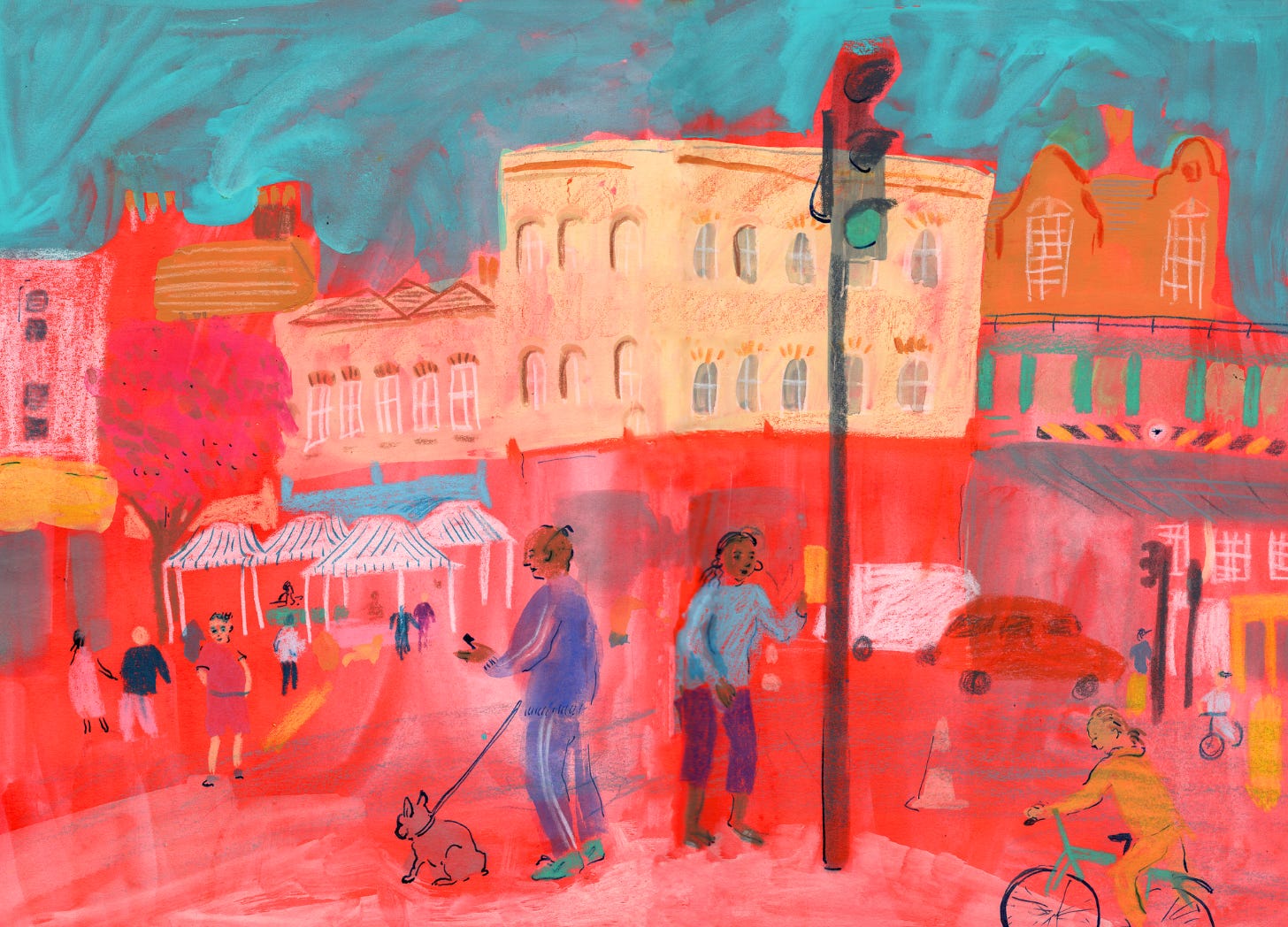
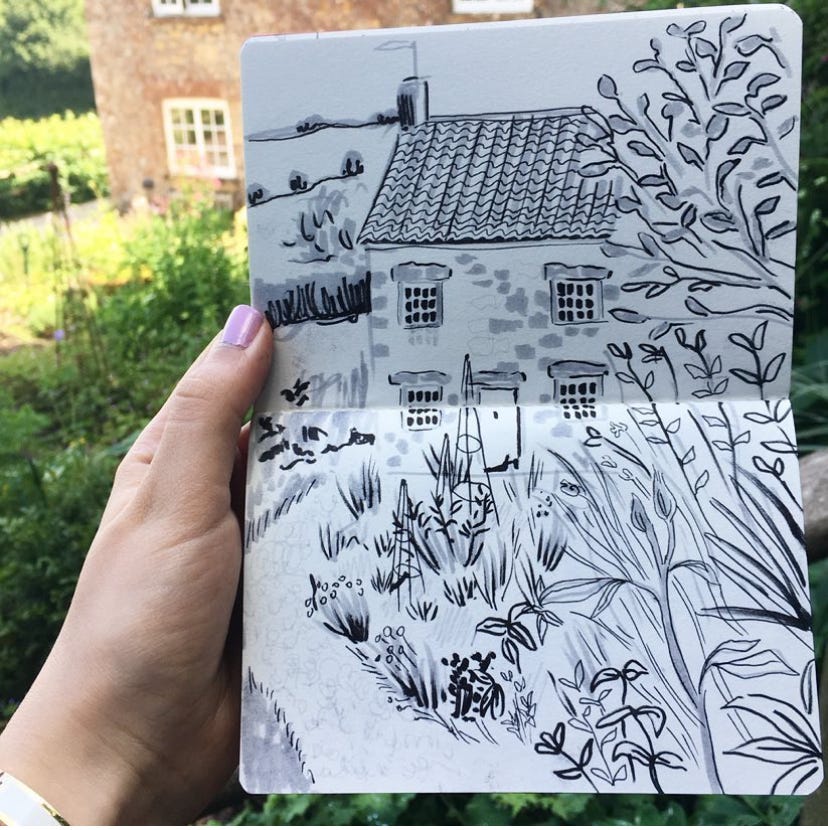

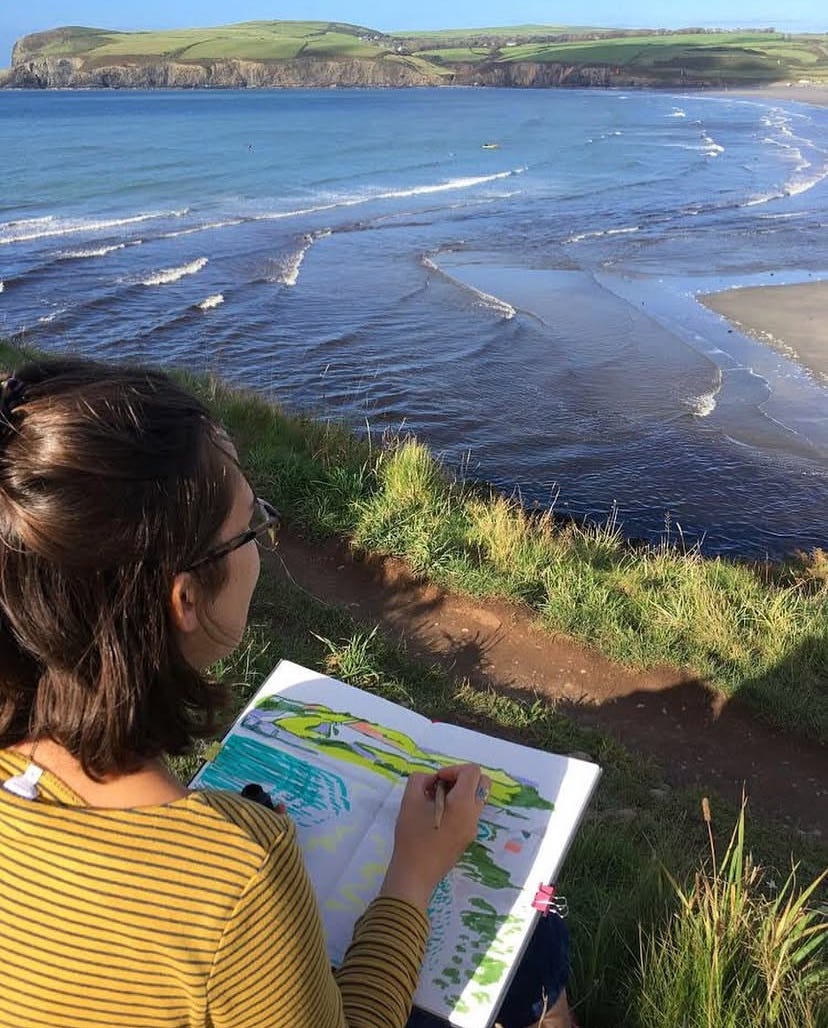
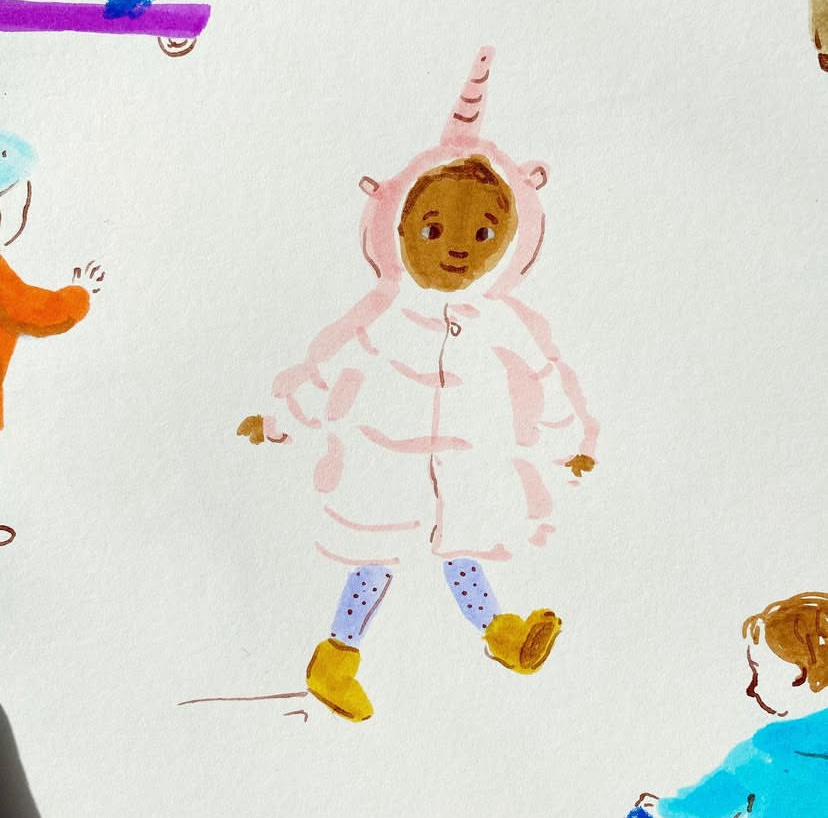
I resonate so much with this! Urban sketching was this medium where I sketched from life as I was in the gap stage, then it was other mediums and then it was junk journaling, collaging. But the one that is bringing me sheer joy because of how handy it is , is sketchnoting. It’s really changed the game for me.
I am documenting my travels from Koh Samui to Koh phangnon to Chiang rai through sketchnoting and it has been the most efficient way of capturing moments intentionally without too many supply demands.
This is the latest one which involves a paddle boarding disaster, live music, night under the stars and a new workout😁✨. I hope u enjoy it too🌸✨
https://substack.com/@urmilamenon/note/c-111850909?r=2hxtwc&utm_medium=ios&utm_source=notes-share-action
Thankyou for this post. You are giving me the confidence to do more drawing from life, it seems to be the thing that is missing in my art practise. Beautifully written .